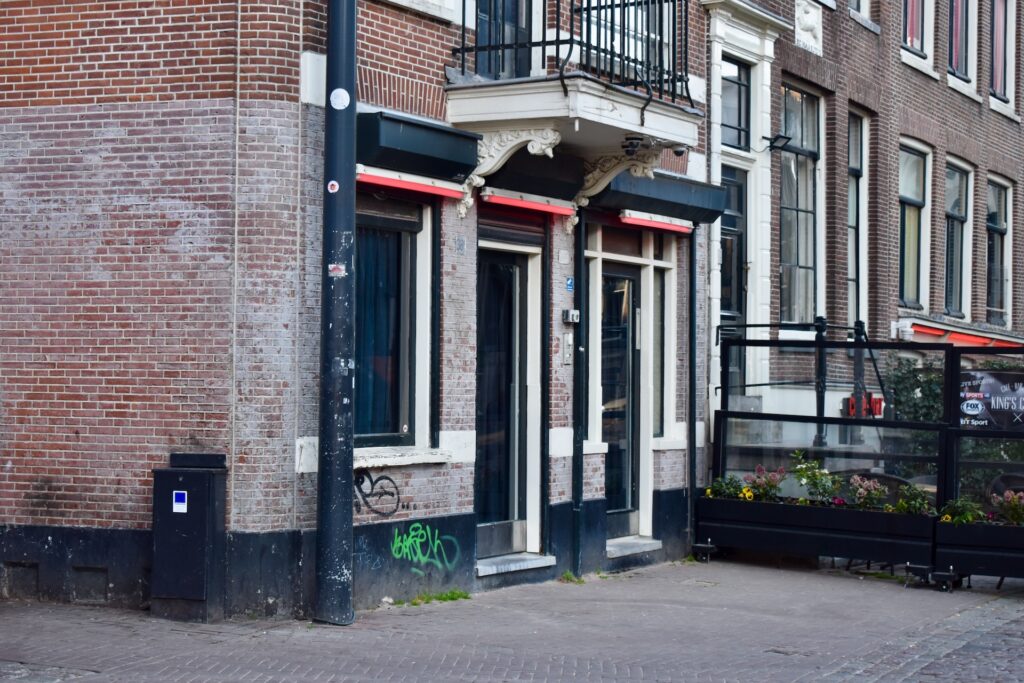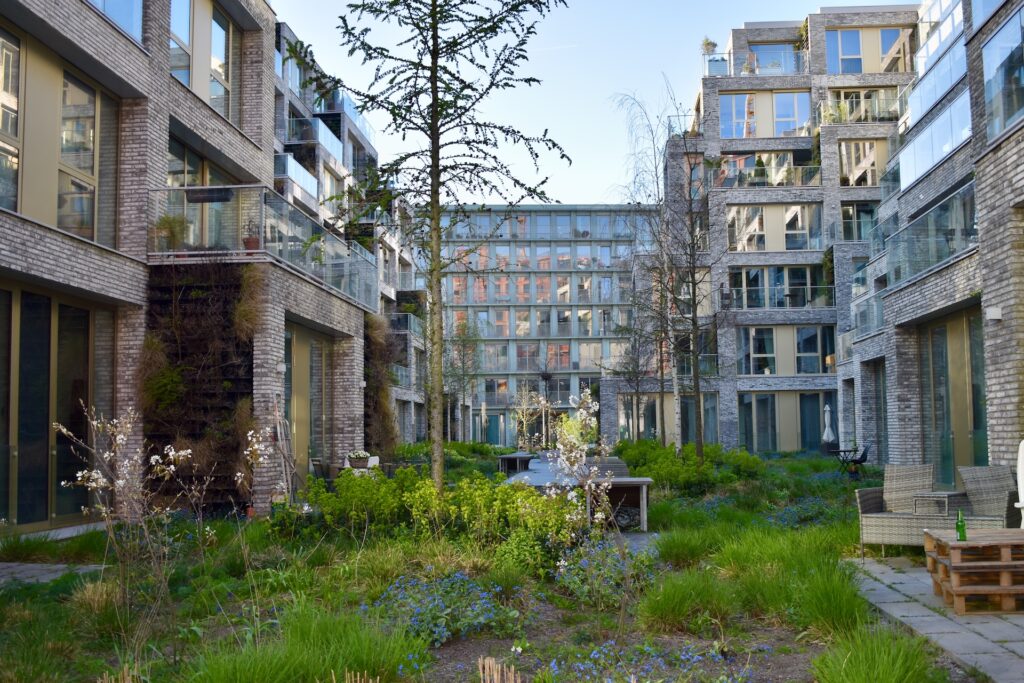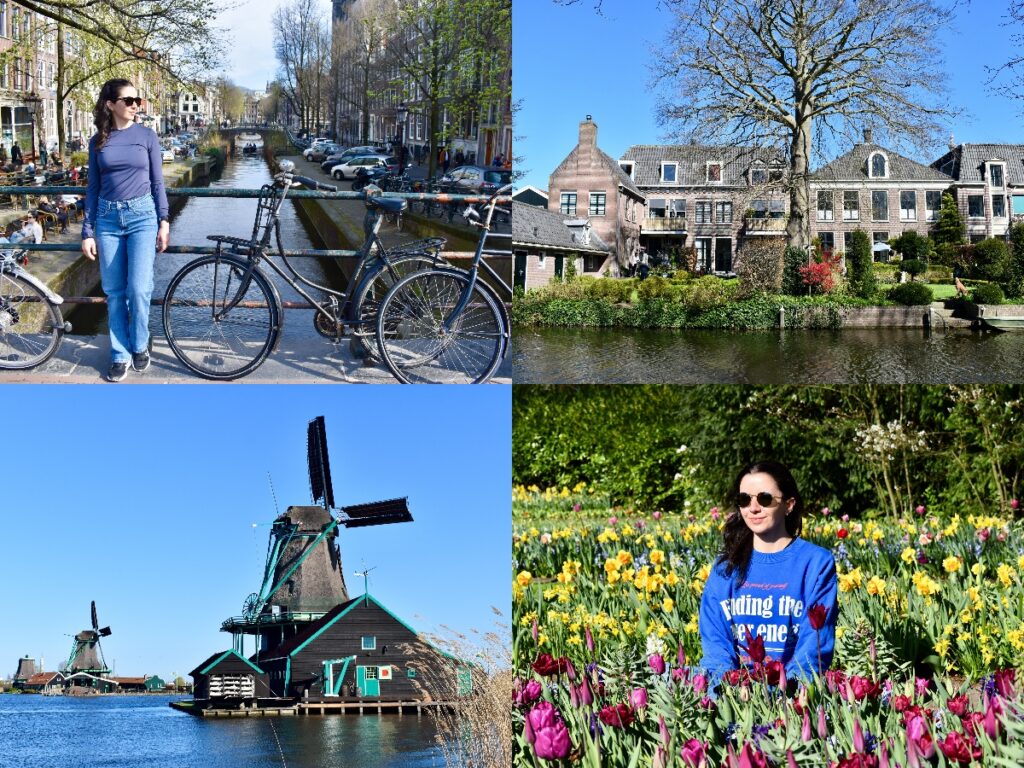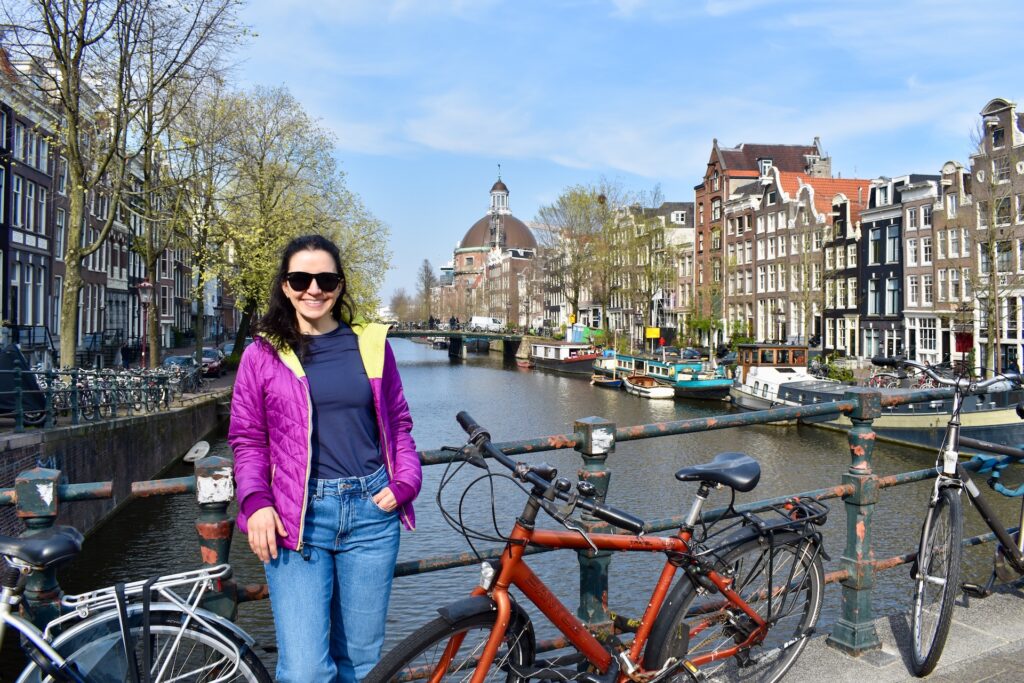Hi there,
In April 2025, we decided to start our tour of Northern European capitals with Amsterdam, a city that had been on my radar for a long time. However, what I found in this city was not only surprising, but also full of contradictions.
What I imagined as an exemplary city, idealized for its “first world” reputation and tolerance, turned out to be something very different in several respects.
Planning:
- Arrival in the city and after lunch, we did the tour of Jordaan
- Amsterdam Center
- Keukenhof and North Amsterdam
- Zaanse Schans and Edam
- Last day. Walk through the center in the morning, lunch and return to the hotel to pick up the luggage.
Dirt and overcrowding
The first thing I noticed upon arriving in Amsterdam was the dirt. We stayed in a hotel outside the center, which turned out to be a great choice due to the extreme overcrowding of tourism in the heart of the city.
In the first area we visited, we immediately noticed the amount of trash on the sidewalks and canals, which, although beautiful, were also full of floating debris. The number of tourists was also overwhelming, something that was repeated throughout our stay.
In fact, we did not enter the Anne Frank Museum because of the line to get in.
The Red-Light District and prostitution

One aspect I could not ignore was the legalization of prostitution and drugs. While touring the Red-Light District, I was overwhelmed not only by the filth and murky atmosphere, but also by the contradiction of living in a city where the female sex trade is part of everyday life.
Although prostitution is legalized, the experience of walking those streets and seeing the interaction of some groups of men in that context was deeply uncomfortable for me.
As a feminist, I cannot help but think about how this reality reflects a society that has not yet eradicated the sexual exploitation of women. Even if we try to normalize it, prostitution is still a trade that exploits women.
At the beginning, male brothels were also set up, but it did not work because women do not consume prostitution.
It is men who pay to rape women and the fact that it is allowed makes it clear that Dutch society is sexist.
Here I tell you a bit more about the legalization of prostitution in the Netherlands:
Prostitution in the Netherlands was never illegal, but for centuries it was in a kind of “grey area”. It was not officially allowed, but it was not prosecuted too strongly either. In port cities like Amsterdam, there were brothels operating in plain sight as early as the Middle Ages. The logic was: “if you can’t eradicate it, at least control it”.
For a long time, the Dutch approach was one of pragmatic tolerance. Not that they considered prostitution desirable, but they preferred to have it regulated rather than push it underground. This principle is called gedogen, and it also applies to other things like soft drugs.
Although tolerated, prostitution was not fully legal until 2000. That year, the government decided to lift the ban on brothels, which meant that, from then on:
- Brothels could operate as legal businesses.
- Sex workers could register as self-employed.
- They had to pay taxes, have health care coverage, pay pension contributions, etc.
- Authorities could better control working conditions and combat human trafficking.
The idea was clear: if it already existed, better to bring it out of the shadows and give rights to those who worked in it. This was sold as a “pro-rights” measure, feminist even.
But it was not as pretty as it seemed
Over time, criticisms began to emerge. Many of the registered sex workers were indeed self-employed, yes, they worked by choice… but many others were not. What began to be noticed is that trafficking in women did not disappear with legalization. On the contrary: it became better camouflaged.
In Amsterdam’s famous Red-Light District, many women come from Eastern Europe or impoverished countries. And although officially they are there on their own, in practice many are under the control of pimps, in debt, or coerced.
In recent years, even within Amsterdam, there is a change of perspective. Many local politicians, feminists and neighbours say that the model is not working as intended. So:
- The number of showcases in the Red Light District has been reduced.
- There are plans to move the prostitution zone to the outskirts of the city.
- There are campaigns to reduce sex tourism.
- And there is more talk of abolitionist models (such as the Swedish one), where the focus is on penalizing the client and protecting the woman.
In short, prostitution was legalized in 2000, with good intentions: to give rights, to control, to combat trafficking. But in practice, exploitation did not disappear. Today, the Netherlands is rethinking that model because it did not work.
Vegan food
One aspect that surprised me in a positive way was the offer of vegan products in supermarkets. In places like Lidl and Aldi, the variety of vegan meats and cheeses was impressive, something that in Spain or Portugal I have yet to find.
However, the curious thing was that, despite the great offer in supermarkets, the city does not have so many vegan restaurants, which left me somewhat puzzled. Although I tried several vegan options, such as sushi and vegan burgers, it seemed to me that the city has room for improvement in this aspect.
What I liked: Bicycling and urbanism
One very positive thing was that there was no traffic, a surprising phenomenon for such a popular city. Throughout my visit, I experienced what seemed to be a Sunday holiday every day, as you saw virtually no cars on the streets.
Seeing how the entire city functions without cars, with its citizens getting around on bicycles, was a real lesson in urban planning and sustainability.
This, without a doubt, is something that other cities in Europe should imitate. This mobility model is something that, in my opinion, makes Amsterdam unique.
On the other hand, although Amsterdam is not as green as Porto, for example, the urban planning is focused on vegetation, as everything is full of potted plants, and all buildings have a delimited space for vegetation.
In the north of the city, which is the area of new construction, this trend could be appreciated even more and in the center of the buildings there was always a common area full of greenery.

In general, from the beginning, the issue of legalized prostitution, legalized soft drugs, and the lack of free and universal public health care, are aspects that make me think that the Netherlands is not a place where I would like to live.
Although it is a beautiful city, because any place with rivers and canals has its charm, and I was fascinated by the architecture, I found the filth very unpleasant. Besides the amount of garbage on the sidewalks and the groups of men you see, knowing what they are going to the city for, added to the omnipresent smell of marijuana, created an uncomfortable feeling.
As of May 2023, the Amsterdam City Council has implemented measures to try to limit prostitution and drug use by tourists. Smoking cannabis has been banned in the historic center, including the Red-Light District, and the opening hours of shop windows and bars have been restricted. This measure is in response to complaints from residents about noise, dirt and insecurity caused by tourists.
Something else that shocked me was the lack of public toilets; even in the mall there were no free toilets, and if you wanted to use them, you had to pay one euro or one euro fifty, which I find absurd for a city that receives so much tourism.
As for the people, the treatment was always cordial and polite. It is true that the friendliness of the Portuguese is difficult to match, but the Dutch, in general, are correct and polite.
What impressed me most about Amsterdam, without a doubt, was the bicycle culture. The fact that the city runs without cars, was impressive to me. It’s a city model that I honestly think should be exported to all of Europe.

Expenses:
- Flights: 409 euros
- Hotel: 650.28 euros
- Food: 254.86 euros
- Supermarkets: 39.6 euros
- Transport: 119.67
- Visits: 65 euros
- Primark: 6 euros
TOTAL: 1544.41 euros
Here I explain more about healthcare in the Netherlands:
In the Netherlands there is no 100% public healthcare as such. What they have is a universal system but based on mandatory private health insurance.
Everyone is obliged by law to take out basic health insurance. This applies to both Dutch citizens and residents (including people who move there for work or studies). It is not optional.
This basic insurance covers the essentials, such as:
- GP visits
- Hospitalizations
- Basic medicines
- Emergency medical care
- Maternity and postnatal care
- Basic psychiatric care
It does not include things like:
- Adult dentist (only covered for children under 18)
- Physiotherapy (except in chronic cases)
- Glasses or contact lenses
- Alternative therapies
If you want that covered, you can take out supplemental insurance, which is optional and depends on each insurer.
In 2025, basic insurance costs around 120-150 euros per month per person, depending on the provider.
In addition, there is a “mandatory deductible” which is the amount you pay before the insurance starts to cover certain expenses (in 2025 it is about 385 euros per year). This applies only to certain treatments, not to the general practitioner.
For children under 18, the insurance is free.
What if you do not have insurance? If you live there and do not take out insurance (even if you are healthy), you can be fined. You literally cannot live in the Netherlands without being insured, unless you are a tourist (and even then, you will be asked for travel insurance if something happens).
Here are the links to my YouTube channel:

